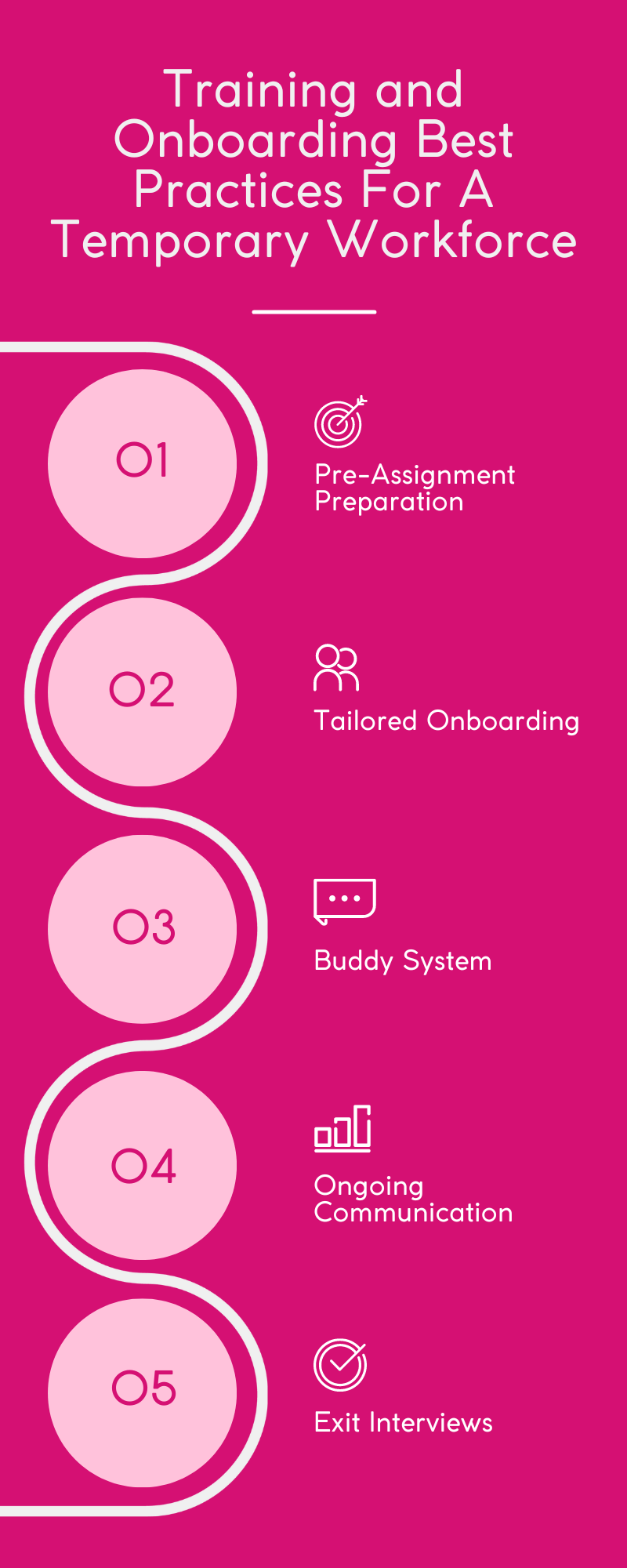In the dynamic landscape of modern business, flexibility is a key driver of success. As companies strive to adapt to changing market demands and operational requirements, the use of temporary employees and seasonal workers has emerged as a strategic solution.
The benefits of this employment model are numerous, from agility in staffing to cost-effectiveness, but they come hand in hand with unique challenges that require careful consideration. This comprehensive guide will delve into the world of temporary employees and seasonal workers, offering insights, strategies, and best practices to harness their potential and drive organisational excellence.
Advantages and Challenges of Hiring Temporary Employees and Seasonal Workers
Advantages
The utilisation of temporary employees and seasonal workers presents a plethora of advantages for businesses seeking operational flexibility and efficiency. One of the primary benefits is the ability to quickly adjust staffing levels according to fluctuating demand. Seasonal workers, for instance, can be hired during peak periods to ensure optimal productivity without committing to long-term employment contracts. This agility not only minimises labour costs but also enhances responsiveness to market dynamics.
Additionally, the influx of fresh talent brought by temporary workers injects new perspectives and ideas into the workforce, fostering innovation and creativity. Temporary employees often come from diverse backgrounds and industries, bringing a wealth of experiences that can invigorate a company's problem-solving processes.
Challenges
However, the integration of temporary employees and seasonal workers into an organisation is not without its challenges. One significant concern is the potential disconnect between temporary workers and the company's core values and culture. Without proper guidance and integration efforts, these employees may feel detached, leading to reduced motivation and suboptimal performance.
Moreover, managing a blend of full-time, part-time, and temporary staff can be complex. Effective coordination and communication become crucial to ensure all employees are aligned with the company's objectives and working harmoniously towards shared goals.
Effective Recruitment Strategies for Temporary and Seasonal Workers
A successful temporary workforce begins with a robust recruitment strategy tailored to the unique needs of the position and the company. Here are some proven approaches to consider:
Clear Job Descriptions
Crafting accurate and detailed job descriptions is essential to attract candidates who possess the right skills and experience for the role. Clearly outline the responsibilities, duration, and any specific requirements for temporary or seasonal positions.
Utilise Online Platforms
Leverage online job boards, social media platforms, and industry-specific websites to reach a wider pool of potential candidates. These platforms allow for targeted outreach and efficient candidate screening.
Collaborate with Staffing Agencies
Partnering with staffing agencies can streamline the recruitment process by tapping into their expertise in identifying and evaluating temporary talent. They can handle initial screenings, background checks, and even onboarding.
Employee Referral Programs
Encourage your existing employees to refer candidates for temporary positions. Offering incentives for successful referrals can motivate employees to recommend individuals who are a good fit for the company.
Training and Onboarding Best Practices for a Temporary Workforce

Effectively integrating temporary employees and seasonal workers into your organisation requires a well-designed training and onboarding program. A structured approach ensures that these employees quickly grasp their roles, responsibilities, and the company's culture. Consider the following best practices:
Pre-Assignment Preparation
Before temporary employees start their assignments, provide them with essential information, such as the company's mission, values, and policies. This helps set expectations and ensures that everyone is on the same page from day one.
Tailored Onboarding
Develop an onboarding process that is tailored to the needs of temporary employees. Provide them with an overview of their specific tasks, along with training materials and resources that will help them succeed in their roles.
Buddy System
Pair each temporary employee with an experienced mentor or "buddy" within the organisation. This fosters a sense of camaraderie and provides a go-to person for questions and guidance.
Ongoing Communication
Maintain regular communication with temporary employees throughout their assignments. Check in on their progress, address any challenges they may be facing, and provide constructive feedback.
Exit Interviews
Conduct thorough exit interviews with temporary employees at the end of their assignments. Gather their insights and feedback to improve the onboarding and assignment processes for future temporary workers.
Retention and Motivation Techniques for Seasonal Employees
Retaining seasonal employees beyond their initial assignments can be valuable for both the employees and the organisation. Implementing effective retention and motivation techniques can encourage seasonal workers to return for subsequent seasons and contribute to long-term success.
Recognition and Incentives
Acknowledge the contributions of seasonal workers through recognition programs or incentives. This could include bonuses, gift cards, or other rewards based on performance and commitment.
Skill Development
Offer opportunities for skill development and growth. Providing access to training sessions or workshops can enhance the value proposition for seasonal employees, making them more likely to return for future assignments.
Flexible Scheduling
Where possible, provide flexible scheduling options for seasonal workers. This demonstrates an understanding of their needs and can contribute to a positive work-life balance.
Inclusive Environment
Create an inclusive and welcoming work environment where seasonal employees feel like integral members of the team. Encourage collaboration and interaction among all staff members.
Legal Considerations and Compliance for Temporary Employment
Hiring temporary employees and seasonal workers necessitates a thorough understanding of legal considerations to ensure compliance with labour laws and regulations. Key areas to focus on include:
Employment Classification
Determine the appropriate employment classification for temporary workers. Classify them as employees or independent contractors based on their job roles and responsibilities to comply with tax and labour laws.
Fair Compensation
Ensure that temporary employees receive fair compensation for their work, including adhering to minimum wage laws and providing appropriate overtime pay where applicable.
Benefits and Protections
Understand the eligibility of temporary workers for benefits such as healthcare, retirement plans, and workers' compensation. Compliance with these regulations is essential to avoid legal issues.
Discrimination and Harassment
Temporary workers are entitled to a safe and respectful work environment free from discrimination and harassment. Educate all employees, including temporary staff, about the company's anti-discrimination policies.
Real-World Examples: Businesses Successfully Utilising Temporary and Seasonal Workers

Several businesses have effectively harnessed the power of temporary employees and seasonal workers to enhance their operations. Let's explore a few real-world examples:
Retail Industry
During the holiday season, many retailers experience a surge in customer demand. To manage this increase, major retail chains hire temporary employees to assist with tasks such as stocking shelves, assisting customers, and operating cash registers. By doing so, they ensure a seamless shopping experience for customers and maintain high levels of customer satisfaction.
Agriculture Sector
In the agriculture sector, seasonal workers play a critical role in planting, harvesting, and processing crops. Farms often rely on a temporary workforce to address labour-intensive tasks during peak growing seasons. This flexibility allows farmers to efficiently manage their operations and bring products to market in a timely manner.
Hospitality and Tourism
Hotels and resorts often experience fluctuations in occupancy based on the time of year and special events. Temporary employees are commonly hired to handle housekeeping, front desk duties, and event coordination during peak tourist seasons. This approach enables businesses to provide exceptional guest experiences while optimising staffing costs.
Conclusion
The strategic utilisation of temporary employees and seasonal workers can empower businesses with the flexibility and agility needed to thrive in today's ever-changing market landscape. By embracing the advantages of this employment model while addressing its unique challenges, organisations can tap into a diverse pool of talent and optimise their operations, positioning themselves for sustained growth and success in the competitive business world.
From effective recruitment strategies that harness the specialised skills of temporary workers to thoughtful onboarding and retention techniques that nurture a sense of belonging and commitment, this comprehensive guide has provided invaluable insights and actionable strategies to unlock the true potential of temporary employees and seasonal workers.
As businesses continue to evolve and navigate the complex currents of the corporate ecosystem, the astute integration of these dynamic workforce strategies stands as a testament to proactive adaptation and forward-thinking management. This deliberate approach not only fuels growth and profitability but also fortifies the foundation of long-term prosperity, enabling businesses to remain agile, innovative, and well-prepared for the opportunities and challenges that lie ahead.

